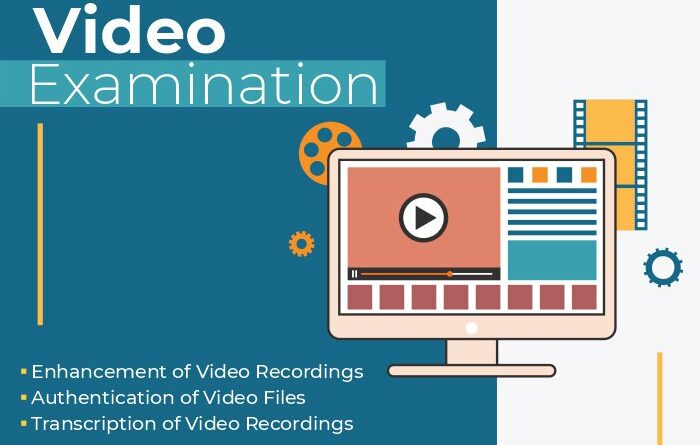Audio & Video Verification: Ensuring Truth in Every Frame
In today’s society, audio and video have become very essential in areas such as criminal activities, journalism, business security and protection of privacy. But the fact is, these types of media files can be manipulated very easily today due to the advancements of editing technologies. It is in this respect that audio and video verification comes into play as a way of authenticating a record as well as identifying signs of tampering. In this article, we’ll look at what audio and video authentication is, why it matters, and how it works.
Why is Audio and Video Verification Critical?
Audio and video verification are the preconditions for the world where fake news can lead to severe consequences. The need for independently verifiable evidence has risen due to the ability to create deep fakes and because of the improvements in editing software. The changes could be of minute significance but they distort perceptions, undermine legal cases, place reputations at risk and influence results in different professional areas.
For example, audio or video clips can be the key evidence in a lawsuit. Should these clips be altered or misrepresented in some way then it would mean that we are imprisoning innocent people or on the other end, releasing the guilty. Accurate and fair audio and video content is significant for truth and justice, and hence the importance of verifying this kind of content.
The Forensic Work in Media Authentication
Both audio and video verification are normally a forensic process – this means that they are a detailed check, and in them, one looks for evidence that the content was tampered with or altered. Many factors indicate that content has been tampered with, however; forensic specialists utilize specific instruments and procedures to establish more about the matter. These analyses try to identify areas that have been manipulated containing dissimilar frames, audio and video disagreeing with each other, and other peculiar cutting.
Some key areas forensic analysis focuses on include:
Changing the Setup – One change is enough to drastically alter the context of a video. Software used by forensic experts can detect minute differences of pixel makeup, light and resolution in any two frames where there is a likelihood of an edit having been made.
Audio Consistency Inspection – Just like video frames there can be checks in terms of irregularities in the audio feed. Every change in the tone or noise that is in the background may also be a clue that something has been altered.
Metadata Analysis – These are details of a particular file creation and may contain information as to the file’s creation time, location and the method of creation. Initially, metadata is usually checked because a change in metadata is indicative of distortions or the absence of data.
Method Applied while Conducting Audio and Video Verification
There are various methods used to authenticate audio and video files as used by the experts. Here are some commonly used methods:
Waveform Analysis for Audio
In waveform analysis, breaks in the audio signal’s waveforms are looked for. These waveforms are compared with original recordings or standard patterns to find out that portions of the waveform are different. Any abrupt rise or fall in the waveform is usually considered an indication of tampering.
Error Level Analysis (ELA)
Error Level Analysis is employed for video files and allows finding parts of the video that have been compressed with different degrees of compression. When a region of a video has been edited, the area containing the edited parts will have a separate compression pattern. This way the forensic expert is able to find out the parts that may have been altered by the other party.
Power and Energy Density
Of all the types of verification this method is most beneficial in audio verification. According to the given frequency and amplitude of an audio file, the professional will distinguish extraneous noises or changes. These frequencies will be absent from the spectrum, and their presence will give researchers clues that some parts of the audio was tampered with.
Frame-by-Frame Video Analysis
Most of the time detectives analyze videos frame by frame for consistency of movement and even differences in lighting. Even the smallest inconsistency in frames could be a red flag for tampering. There is software today that can perform this task in high speed and with high accuracy as compared to manual work.
Uses of Audio and Video Authentication
Audio and video file authentication is critical in different fields since it supports reliability and integrity. Here are some key fields where this process is particularly valuable:
Legal Criminal Investigations
Original sound and picture recordings can be very helpful in assembling proofs and seeking justice. Verified media is often useful in the court settings since the courts often consider verified statements as factual evidence so this process becomes crucial in legal processes.
Media and Journalism
For journalists specifically, posting and or sharing altered and fake content is career death. This way the media engages in confirmation of media files before releasing the information to create a reliable source of information.
Corporate Security
In the corporate world or other commercial affairs, security tapes are replayed to address house matters or manage workforce behavior. The use of original footage is crucial in order for these decisions to be fair and accurate.
Personal Privacy and Protection
Those who have possible privacy threats or personal issues may also use the audio and video verification service as well. This process can corroborate evidence and assists individuals in asserting and enforcing their rights and obtaining fair results.
Challenges in Audio and Video Verification
Although, there are a number of ways through which different verification processes are effective, they are by no means without their problems. One of the problems is currently, there are advancements to editing tools used in creating fake news, thus cannot be easily traced. As we have seen with deepfake technology, the AI can be used to produce almost lifelike fake videos which might not be detected by standard forensic processes. For this reason, forensic specialists always enhance their methods to conform with developing technology.
In addition, it may be useful to know that some verification techniques may not be fully secure. In cases where original files are not available for comparison it becomes difficult to ascertain the authenticity of a file. This is why very much discipline has to be used in handling evidence in the situations where audio and video identification is required.
The Future of Verification of Audio & Video
Thus, there is an unremovable tendency for using reliable audio and video verification systems due to the constantly growing number of digital manipulations. In the future, new techniques of verification are being thought out now, such as artificial intelligence algorithms that can identify deep fakes and other strands of manipulation.
It can be expected that, in the future, self-owned verification procedures will become more frequent and will perform the function of verification to be faster and more open to industries. This could open up the way for even more accurate digital evidence, which means, the truth will remain followed strictly to the seventh generation of copies and even in the audio books.
Conclusion
Audio and video verification services allow a line of protection for discerning genuine information in a world where fake audio and video has become simple to create and share. From the courtroom to the individual’s safety, this verification makes the public consider, hear and review as that of actual occurrence. As technology improves in the future, so will the techniques of verifying, making the truth secure in every frame in the future years.




